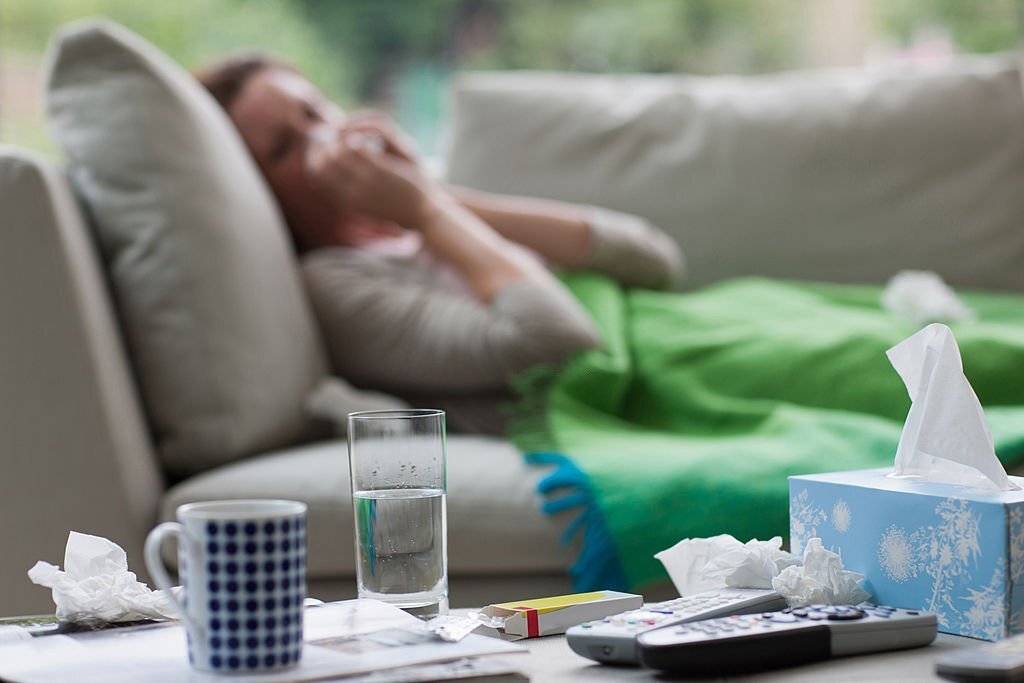In this topic, we will discuss the importance of cold and flu prevention for the health of your family.
We will explore the symptoms and causes of cold and flu and the benefits of prevention.
1. Introduction: The Importance of Cold and Flu Prevention
As the seasons change and temperatures drop, cold and flu viruses become more prevalent.
For families, this can mean missed school and work, disrupted routines, and uncomfortable symptoms.
However, by taking steps to prevent colds and flu, you can help keep your family healthy and avoid the negative impacts of these illnesses.
1.1 Why preventing cold and flu is important for your family’s health
Preventing colds and flu is important for maintaining your family’s overall health and well-being.
Not only can these illnesses be uncomfortable and disruptive, but they can also lead to more serious complications, especially for young children, older adults, and individuals with weakened immune systems.
By taking steps to prevent colds and flu, you can reduce the risk of these complications and keep your family healthy.
1.2 The impact of cold and flu on your family’s daily life
Cold and flu can have a significant impact on your family’s daily life.
Symptoms such as coughing, sneezing, and congestion can make it difficult to focus on school or work, while fever and fatigue can leave you feeling drained and unproductive.
Additionally, if one family member becomes sick, it can quickly spread to others, leading to missed school or work and disruption of routines.
By preventing colds and flu, you can help keep your family healthy and avoid the negative impacts of these illnesses on your daily life.
2. Understanding Cold and Flu: Symptoms and Causes

When it comes to cold and flu prevention, understanding the symptoms and causes of these illnesses is crucial.
The common cold and the flu share some similar symptoms, such as coughing, sneezing, and congestion.
However, the flu can also cause high fever, body aches, and fatigue, which are less common with a cold.
The common cold is caused by a viral infection that affects the upper respiratory tract, typically lasting for 7-10 days.
The flu, on the other hand, is caused by the influenza virus and can result in more severe symptoms and complications, such as pneumonia or bronchitis.
Both cold and flu viruses are contagious and can spread through droplets from an infected person’s coughs or sneezes.
The viruses can also be transmitted through touching contaminated surfaces and then touching the face or mouth.
Understanding the symptoms and causes of cold and flu is the first step in prevention.
3 The Benefits of Cold and Flu Prevention
3.1 Why prevention is better than treatment:
When it comes to colds and flu, prevention is always better than treatment.
While there are over-the-counter medications that can alleviate symptoms, there is no cure for these illnesses.
Prevention, on the other hand, can significantly reduce the chances of getting sick in the first place.
By taking steps to prevent cold and flu, you can save time and money that would otherwise be spent on doctor’s visits and medications.
Additionally, by preventing the spread of illness, you can avoid missed work and school days and keep your family’s daily routine on track.
3.2 The benefits of keeping your family healthy and free from cold and flu:
Keeping your family healthy and free from colds and flu has numerous benefits.
When your family members are healthy, they can be more productive and engaged in their daily activities, whether it’s work or school.
Children who are healthy are more likely to be focused and able to learn, while adults can be more efficient and productive at work.
Additionally, when your family is healthy, you can avoid the stress and worry that comes with having a sick loved one.
You can spend more time enjoying quality time together, rather than worrying about cold and flu symptoms.
By focusing on prevention, you can help your family stay healthy and enjoy all of the benefits that come with good health.
4. The Role of Hygiene in Cold and Flu Prevention
4.1 Hand washing is one of the most effective ways to prevent the spread of cold and flu viruses.
Encourage your family members to wash their hands regularly, especially before eating, after using the bathroom, and after coughing or sneezing.
Make sure everyone knows how to wash their hands properly, which means lathering up with soap and water for at least 20 seconds before rinsing.
4.2 In addition to hand washing, there are other hygiene practices that can help prevent the spread of cold and flu.
Teach your family members to cover their mouths and noses with a tissue or their elbow when coughing or sneezing, and to avoid touching their faces as much as possible.
Regularly disinfect frequently touched surfaces like doorknobs, light switches, and countertops to reduce the risk of spreading germs.
If someone in your family does get sick, make sure they stay home from work or school to avoid infecting others.
5. Boosting Your Family’s Immune System
Keeping your family’s immune system strong is an important aspect of cold and flu prevention.
A strong immune system can help fight off infections and reduce the severity and duration of illnesses.
Here are some tips to boost your family’s immune system:
5.1 Eat a balanced and healthy diet:
A healthy diet rich in fruits, vegetables, whole grains, lean protein, and healthy fats can provide the necessary nutrients to strengthen the immune system.
5.2 Stay hydrated:
Drinking plenty of water and other fluids can help flush out toxins and keep the body hydrated, which is important for overall health.
5.3 Get enough sleep:
Adequate sleep is essential for a healthy immune system.
Make sure your family is getting enough sleep, particularly during cold and flu season.
5.4 Exercise regularly:
Regular exercise can help boost the immune system and reduce the risk of illness.
Encourage your family to stay active by engaging in physical activities that they enjoy.
5.5 Reduce stress:
High levels of stress can weaken the immune system, making you more susceptible to illness.
Encourage your family to find healthy ways to manage stress, such as exercise, meditation, or spending time in nature.
By incorporating these tips into your family’s routine, you can help boost their immune system and reduce the risk of cold and flu.
6. Staying Active and Healthy

Staying active and healthy is an essential part of maintaining a healthy lifestyle for your family.
Regular exercise and physical activity can help to boost your immune system, increase your energy levels, and reduce your risk of developing chronic illnesses such as heart disease, diabetes, and obesity.
There are many ways that you can encourage your family to stay active and healthy, even if you have a busy schedule.
Consider scheduling family walks or bike rides after dinner, participating in outdoor activities such as hiking or swimming, or even signing up for a family fitness class at your local gym.
Additionally, it’s important to promote healthy eating habits in your family.
Make sure that your family is getting plenty of fruits and vegetables, lean protein sources, and whole grains.
Encourage your family to drink plenty of water and limit sugary drinks and snacks.
By making exercise and healthy eating a priority in your family’s daily routine, you can help to promote overall health and wellness while reducing the risk of illness and disease.
7. Avoiding Exposure to Cold and Flu
7.1 Tips for avoiding exposure to cold and flu
Preventing exposure to cold and flu viruses is one of the most effective ways to stay healthy.
Some simple tips to avoid exposure include avoiding close contact with people who are sick, avoiding touching your face with your hands, and covering your mouth and nose when coughing or sneezing.
It’s also important to clean and disinfect surfaces that are frequently touched, such as doorknobs, light switches, and countertops.
7.2 Strategies for staying healthy when others around you are sick
Even with the best efforts to avoid exposure, it’s still possible to catch a cold or the flu.
However, there are strategies that can help you and your family stay healthy even when others around you are sick.
One key strategy is to boost your immune system through a healthy diet, regular exercise, and plenty of rest.
Additionally, getting a flu vaccine each year can provide added protection against the flu virus.
If someone in your household does become sick, it’s important to encourage them to stay home and limit contact with others to prevent the spread of the illness.
8. When Someone in Your Family Gets Sick
8.1 What to do when someone in your family gets sick:
When someone in your family gets sick, it’s important to take action quickly to prevent the illness from spreading to others.
Here are some steps you can take:
8.1.1 Isolate the sick person:
Try to keep the sick person away from others as much as possible.
If possible, have them stay in a separate room and use a separate bathroom.
8.1.2 Clean and disinfect:
Clean and disinfect frequently touched surfaces, such as doorknobs, light switches, and faucets.
Use a disinfectant that is effective against the specific illness.
8.1.3 Wash your hands:
Wash your hands frequently, especially after coming into contact with the sick person or their belongings.
8.1.4 Monitor symptoms:
Keep track of the sick person’s symptoms and seek medical attention if necessary.
8.2 How to care for someone who is sick while minimizing the risk of spreading the illness:
When caring for someone who is sick, it’s important to take precautions to prevent the spread of the illness to others.
Here are some tips:
- Wear a mask: If you are caring for someone who has a respiratory illness, wear a mask to reduce the risk of inhaling respiratory droplets.
- Wash your hands: Wash your hands frequently, especially after coming into contact with the sick person or their belongings.
- Use disposable items: Use disposable tissues, towels, and dishes to avoid spreading germs.
- Isolate the sick person: If possible, have the sick person stay in a separate room and use a separate bathroom.
- Monitor symptoms: Keep track of the sick person’s symptoms and seek medical attention if necessary.
9. The Role of Vaccines in Cold and Flu Prevention
9.1 The Role of Vaccines in Cold and Flu Prevention
Vaccines are an important tool for preventing the spread of cold and flu.
The flu vaccine, for example, is recommended for everyone over the age of 6 months, especially those at high risk for complications from the flu, such as young children, pregnant women, and the elderly.
The flu vaccine works by exposing the body to a weakened or dead form of the flu virus, which triggers an immune response that helps protect against future infections.
It’s important to get vaccinated every year, as the flu virus can change from season to season.
Similarly, the pneumococcal vaccine can help prevent pneumonia, a common complication of the flu.
This vaccine is recommended for all children under the age of 2, as well as adults over the age of 65 and those with certain medical conditions.
Other vaccines, such as the measles, mumps, and rubella (MMR) vaccine, can also help prevent illnesses that can weaken the immune system and increase the risk of cold and flu.
9.2 Common Myths and Misconceptions about Vaccines
Despite the proven benefits of vaccines, there are still many myths and misconceptions surrounding their use.
One common myth is that vaccines can cause autism.
However, numerous studies have found no link between vaccines and autism, and the original study that suggested a connection has been thoroughly discredited.
Another myth is that vaccines are not safe.
However, vaccines undergo rigorous testing and monitoring to ensure their safety and effectiveness. The most common side effects of vaccines are mild and temporary, such as soreness or redness at the injection site, and serious reactions are rare.
It’s important to talk to your healthcare provider if you have any concerns or questions about vaccines.
They can provide accurate information and help you make informed decisions about protecting yourself and your family from cold and flu.
10. Conclusion: Prioritizing Cold and Flu Prevention for a Healthy Family
In conclusion, prioritizing cold and flu prevention is essential for maintaining the health and well-being of your family.
By understanding the symptoms and causes of cold and flu, practicing good hygiene, staying active and healthy, avoiding exposure to the illness, caring for sick family members properly, and getting vaccinated, you can significantly reduce the risk of illness in your household.
Prevention is better than treatment, and the benefits of keeping your family healthy and free from cold and flu are immeasurable.
By implementing these tips and making cold and flu prevention a priority, you can enjoy a healthier, happier, and more productive family life.
Captivating Blog Post that may appeal to your family’s interests
Safeguard Your Loved Ones: Expert Advice On Choosing The Right Insurance For Your Family
Protect Your Family’s Future: 5 Essential Insurance Tips You Should Know
Planning For The Unexpected: Importance Of Life Insurance For Families
Unlocking The Benefits: 10 Key Life Insurance Tips For Maximizing Coverage
Maximizing Your Coverage: Life Insurance Tips For Families – 2023 Updates
 Family Sleep Habits: The Importance of Sleep for Your Family’s Health
Family Sleep Habits: The Importance of Sleep for Your Family’s Health The Benefits of Family Meals: Eating Together for Health
The Benefits of Family Meals: Eating Together for Health Screen Time Management: Family’s Health
Screen Time Management: Family’s Health